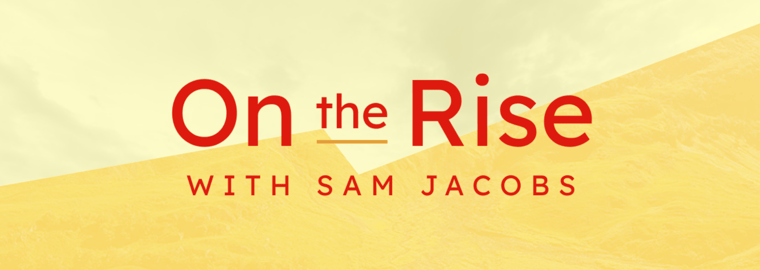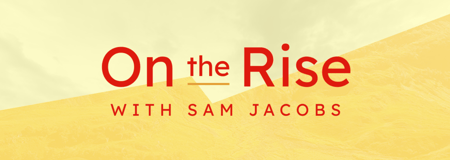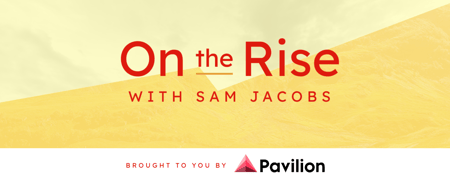-
Membership
- Tiers
- Ideal Functional areas
- Resources
- Community
-
Pavilion University
- Featured Schools
- Upcoming Courses
- Courses & Faculty
- Events
- Stay informed

Welcome back to On the Rise, where we explore kinder ways to do business. This month, I want to talk about the power of failure and the right way to set goals.
There is no escaping the talk of resolutions and goals this time of year, but a crucial piece I find missing in the discourse is the power of failure.
If you’re familiar with my working background, you might know I’ve been fired. Four times to be exact. I’ve talked about this a lot over the years and how it’s led me to where I am today, at Pavilion.
Earlier in my career, I let failure overwhelm me. I was stuck in a loop of disappointment, negative self talk, and dissatisfaction of where my life was heading.
That all changed at a rest stop on the New Jersey turnpike. It was 2017, and I had just received an email from my CEO asking to meet first thing Monday morning. I knew I was going to be fired again.
I was sick of feeling sorry for myself, so instead of wallowing in failure or driving out to Coney Island and staring at the waves, I took a new approach. I decided to reflect on what I was calling failures and reframe my narrative.
I realized that my failures weren’t failures at all. Like a friend once told me, it doesn’t help to be such an asshole to yourself.
Reframing “failures” as stepping stones on a journey leading to fulfillment will change the flow of energy around you and begin to attract more success. Success breeds success and abundance breeds abundance. That is the key.
So when I was fired at the rest stop, I resolved to use all the lessons I had learned as a springboard to finding and fueling my purpose.
I won’t say it was all clear skies and success from that point on, but that realization was a turning point for me. And the community Pavilion is today is a direct result of it.
I’ll be going much deeper into this topic and the framework for finding your purpose and leading with kindness in my new project — a book called Nice Folks Finish First that I’m working on with my colleague Kerri Linsenbigler. We’ll have more details to share soon.
Until then, let’s get into how to set goals for 2022.
While failure does provide powerful lessons, there is a fundamental issue in how a lot of people set their goals. Most people list goals with theoretical language, i.e. “I hope that I will do X” or “My goal is to achieve Y.” This is how you introduce doubt and ultimately set yourself up for failure.
Instead, write your goals from the future looking back on what you’ve already accomplished. Write a paragraph of where you are in December 2022 and make it as real as possible (this is called building scaffolding images).
Set the scene for yourself. Use specific details: Where are you? What’s the weather outside? What specifically were you just doing before you sat down to write your annual reflections?
From there, list out specific accomplishments, how you accomplished them, and how good they made you feel. Use positivity.
I learned this goal setting framework from executive coach John Mark Shaw, and it’s what I use for the Pavilion team and in my personal life. I get more into it on the Sales Hacker Podcast, but trust me — it works. Arthur Brooks even wrote a piece about the power of positivity in goal setting for The Atlantic.
Try this out in 2022 and you’ll be hitting your goals even faster than you thought possible.
Learn how to leverage 8 upsell and cross-sell strategies to set the stage for a winning year. Register here.
We’ll help you align revenue goals cross-functionally, so sales and marketing can work together like peanut butter and jelly. Register here.
Thanks for joining me this month. Let’s leverage all the lessons we’ve learned and crush our goals for 2022.
Until next time,
Sam
P.S. I’m a big believer in coaching and if you want an intro to John, just let me know. I have no economic incentive and don’t receive a referral fee, I just like connecting people to powerful resources and he’s helped me a tremendous amount.
Subscribe to next month’s On The Rise newsletter here.

